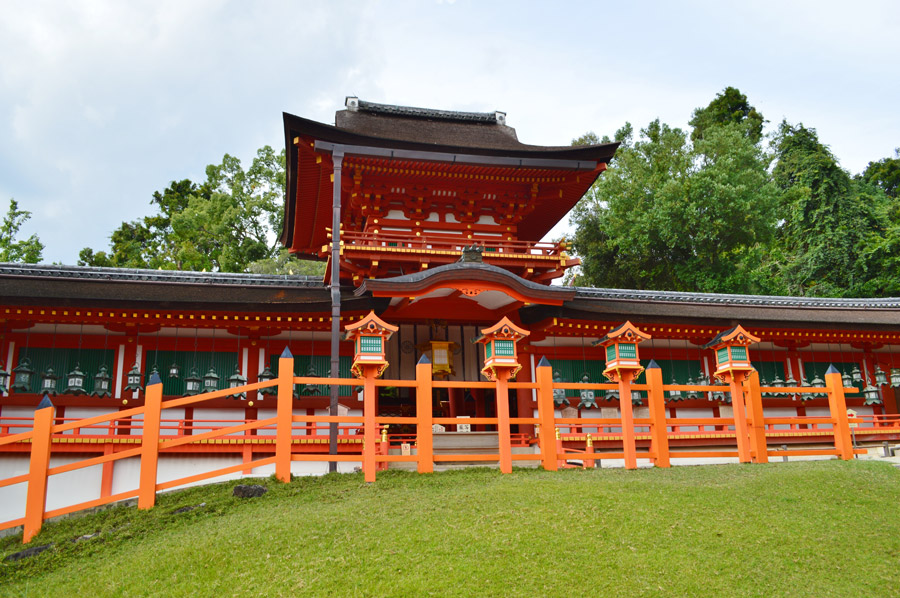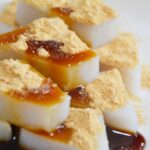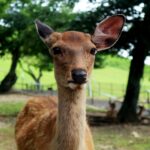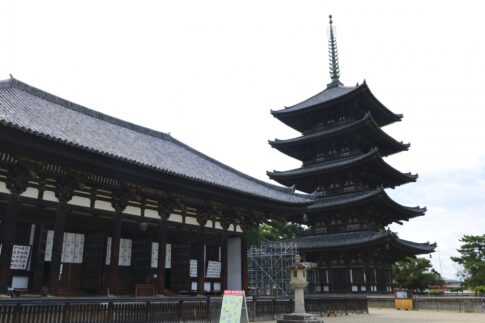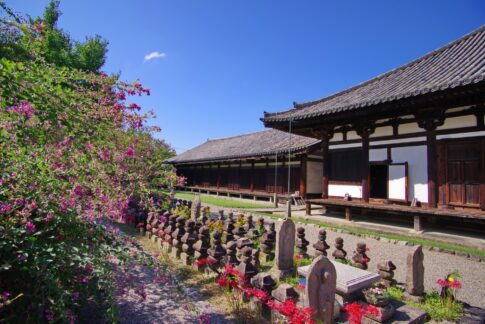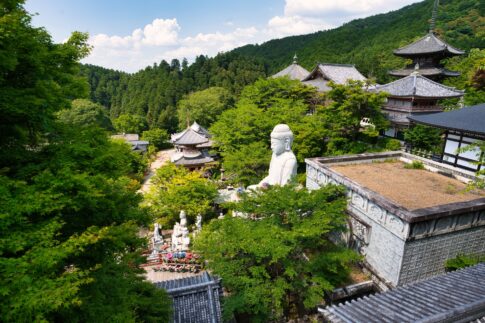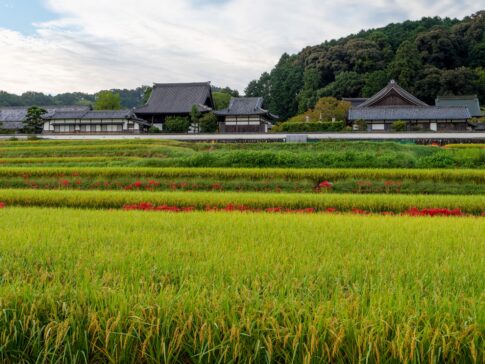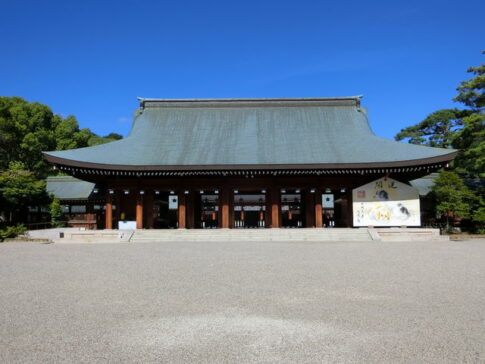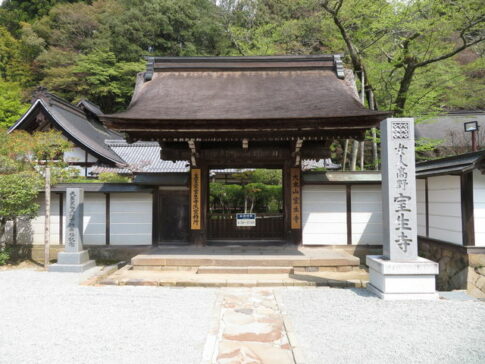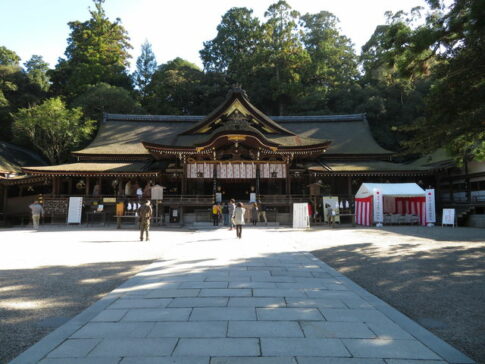This time, we will explain about KasugaTaisha Shrine.
KasugaTaisha Shrine is the historical place and you can enjoy nature and art to the fullest on the vast grounds.
Let us tell you how and what you have a good time in KasugaTaish Shrine.
① History of Kasuga Taisha Shrine
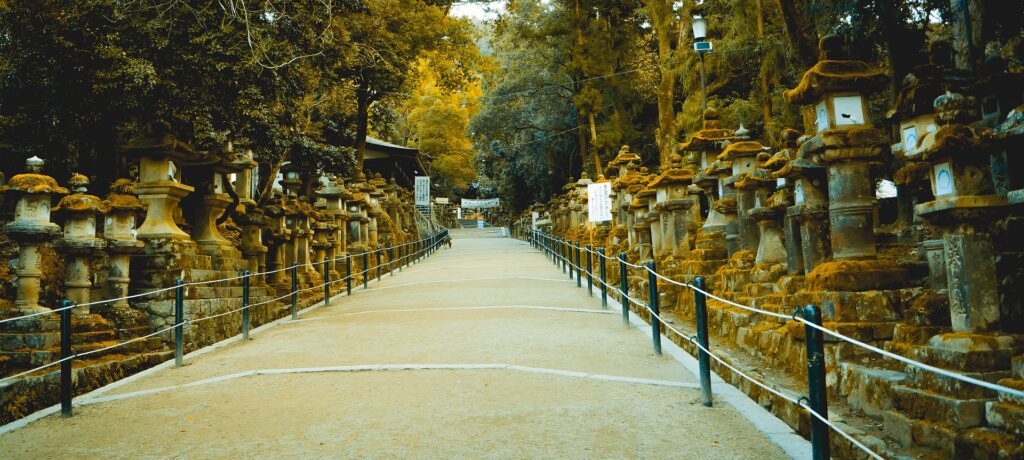
The shrine is said to have originated in the early Nara period (710-794), when Takemikazuchi no Mikoto of Kashima, Ibaraki Prefecture, was enshrined at the summit of Mikasa Mountain to protect the Heijo-kyo Capital.
In 768 (Jingo-Keiun 2), by order of Emperor Shoutoku, the shrine was built at its present location, and Futsunushi no Mikoto from Katori, Chiba Prefecture, and Amenokoyane no Mikoto and Himegami from Hiraoka, Osaka Prefecture were also enshrined there.
In the Heian period (794-1185), the Imperial family and aristocrats began to visit Kasuga, and with the establishment of the ceremonial annual rebuilding of the shrine every 20 years, the main shrine and other buildings were enlarged to their present scale.
In the medieval period and later, the faith spread to samurai families and common people, and more than 3,000 branch shrines were built in various parts of Japan.
The shrine’s precincts are filled with stone lanterns and hanging lanterns of various shapes, known as “Mantoro,” many of which were donated by commoners, which shows the depth of the people’s faith in the shrine.
The “Mantoro” ritual, in which all the lanterns are lit on fire, is held every February on Setsubun day and August 14 and 15, attracting many worshippers with its fantastic beauty.
② Highlights of KasugaTaisha Shrine
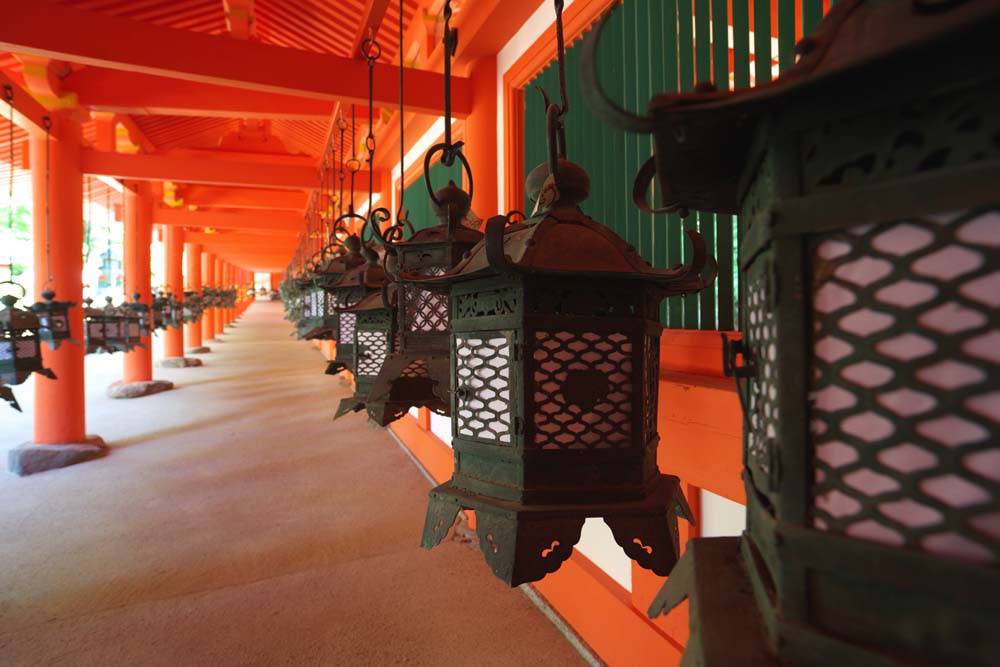
KasugaTaish Shrine has its huge premises and there are wide variety of spots that you should check.
Kairo (The cloister)
This is designated as an Important Cultural Property.
The cloister is a building that circles the four sides of the main hall and other major buildings.
The South Corridor extends 21 meters from east to west, centering on the South Gate, and turns north at both ends to connect to the East and West Corridors.
The East Corridor is approximately 37 meters long and ends where it meets the East Corridor with the Yeonggaimon in the center.
The West Corridor is about 57 meters long, and from the south, there are Keigamon Gate, Seishimon Gate, and Uchisamimon Gate.
The north corridor is 27 meters long, and ends just before it goes around to the rear of the main hall.
The lengths of the east and west corridors are different because of this structure.
Madome Bashi(Madome bridge)
In front of the Manyo Botanical Garden and Kacchaya, Madome Bashi spans the stream where the Mizutani River is diverted to Tobikino.
It is the last bridge at the end of the horse field.
It is also called Rokui-no-hashi or Rokudo-no-hashi.
In the Kamakura period (1185-1333), the belief that there was a hell under Kasuga Field led to the spread of the belief that Jizo Bosatsu (the main deity of the third hall of the shrine) would rescue people who believed in Kasuga Myojin even if they fell into hell.
This is the entrance to Kasuga Jigoku.
It seems that this place was thought to be the entrance to the Kasuga Hell.
Kokuho Kan(The Kasuga Taisha National Treasure Hall)
The Kasuga Taisha National Treasure Hall is a museum that houses and displays a large number of cultural properties, mainly 354 national treasures and 1482 important cultural properties owned by Kasuga Taisha.
Kasuga Taisha is also known as the “Shosoin of Heian” because many of the treasures in the shrine’s collection were created in the Heian period (794-1192), and many of them remain only at the shrine.
These arts and crafts from the dynastic period, as well as representative Japanese weapons and arms, such as armor and swords, are on display from time to time in accordance with the exhibition themes of the special exhibitions.
At the introduction of the exhibition, the “Kamigaki-Kamigaki” installation space, which expresses the sanctuary of Kasuga with water and light, provides a place for visitors to calm their minds before viewing the treasures.
Another highlight is the Dadaiko Hall, which houses one of the largest dadaiko drums in Japan, used in the dance and music performances during the Kasuga Wakamiya Onmatsuri Festival.
The Kasuga Taisha National Treasure Hall is an art museum where visitors can appreciate the elegant culture of the imperial dynasty in the mysterious space that is unique to Kasuga Taisha.
Manyo Shokubutsuen(Manyo Botanical Garden)
Botanical garden featuring plants from the Manyoshu anthology. In 1932, we received a gift from the Emperor Showa in Kasugano, which is deeply associated with the Manyoshu, and opened the oldest Manyo Botanical Garden in Japan, with approximately 300 varieties of Manyo plants.
The garden is now a place where many plants and trees sprouting life in the mountains and fields are kept in their natural state with as little human intervention as possible, and are enjoyed by visitors as a place that gives them peace and tranquility.
The 3-hectare (9,000 tsubo) garden consists of the Manyo Garden, the Village of Five Grains, the Camellia Garden, and the Wisteria Garden.
What are Manyo Plants?Approximately 180 plants appear in the Manyoshu with Manyo names. Since many of the names differ from modern botanical names and include many botanical theories, approximately 300 species are considered Man’yo plants.
Some plants are for appreciation, but most are discreet and live quietly.
They have practical uses such as food, medicine, clothing, dyes, and even materials for construction and crafts, and have lived closely with human life.
This garden is a specimen garden for visitors to understand the many-leaved plants.
In order to increase the number of Manyo plants, plants other than wisteria are planted and displayed in small quantities.
Also, the blooming time may vary depending on the climate of the year.
Please check the season before you visit.
Ninaijaya(Ninai Café)
At the end of the Edo period (1603-1867), a tea box and a tea kettle were placed on a tenbin stick in the precincts of KasugaTaisha Shrine,
and a rice cake called hiwachiyaki was served on a plate made of Akahada-yaki porcelain. According to “Yamato Meisho Zukai” (Illustrated View of Famous Places in Yamato) and other books, the “Ninaijaya,” where tea was served to visitors to the shrine by a fire made with fire-breathing bamboo, was a specialty of the time.
The teahouse was a place of purification, where people would eat food cooked over a pure fire to purify their bodies and souls before visiting the shrine.
Summary
We introduced KasugaTaisha Shrine today.
You can enjoy many kinds of experiences even around KasugaTaish Shrine.
If you visit Nara, please make the rounds of these places!
